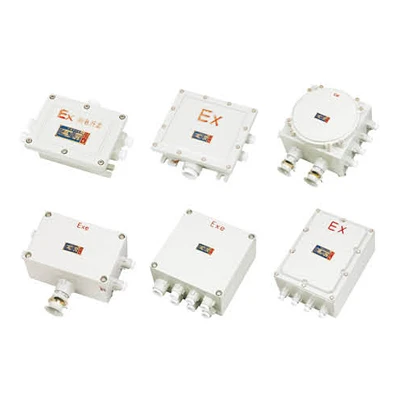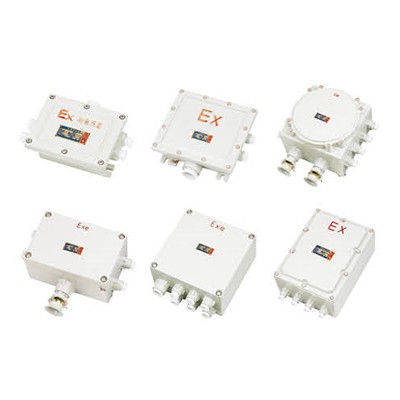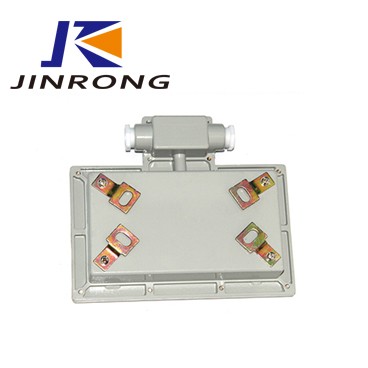Introduction

When working in hazardous areas, understanding the classification of these spaces is crucial for ensuring safety. This is where class 1 div 1 enclosures come into play, offering protection in environments with flammable gases, vapors, or liquids. Exploring the options available for these enclosures is essential for finding the right fit for specific industrial needs.
Understanding Hazardous Area Classification
Hazardous area classification involves identifying and categorizing areas where explosive atmospheres may occur. This classification helps determine the level of protection needed for electrical equipment and enclosures to prevent ignition sources from causing explosions. Understanding the specific requirements for Class 1 Div 1 enclosures is crucial in ensuring the safety of personnel and equipment in these hazardous areas. These enclosures are designed to contain any potential explosion within the enclosure, preventing it from igniting the surrounding atmosphere.
Importance of Class 1 Div 1 Enclosures
In locations where flammable gases, vapors, or liquids pose a constant threat, Class 1 Div 1 enclosures become a critical line of defense. These specially designed enclosures are not just about basic protection; they are essential for ensuring safety, compliance, and operational continuity. Here's why Class 1 Div 1 enclosures are so important:
- Combating Explosive Atmospheres: Class 1 Div 1 environments are hazardous because flammable materials are continuously present and can easily form explosive or ignitable mixtures. These enclosures are designed to withstand such conditions and prevent internal sparks or arcs from igniting the surrounding atmosphere.
- Shielding Personnel and Equipment: By containing any potential explosions or ignitions within the enclosure, Class 1 Div 1 enclosures act as a crucial shield. This safeguards personnel from the dangers of unexpected blasts and minimizes damage to valuable electrical equipment, preventing costly repairs and downtime.
- Prioritizing Safety Compliance: Many industries operate under strict safety regulations. Using Class 1 Div 1 enclosures demonstrates a commitment to adhering to these regulations and prioritizing worker safety. This can help businesses avoid hefty fines and potential lawsuits resulting from non-compliance.
- Maintaining Operational Efficiency: Accidents and equipment failures caused by flammable materials can significantly disrupt operations. Class 1 Div 1 enclosures help minimize these risks, promoting smoother workflow and ensuring long-term operational efficiency.
- Peace of Mind in High-Risk Environments: For businesses operating in hazardous locations, Class 1 Div 1 enclosures provide invaluable peace of mind. They create a safer work environment for personnel and offer a reliable layer of protection for critical equipment.
Class 1 Div 1 enclosures are more than just metal boxes; they are lifelines in hazardous environments. Their ability to withstand explosions, safeguard personnel and equipment, and ensure operational continuity makes them an essential investment for any business operating in locations with a constant threat of flammable materials.
Exploring Class 1 Div 1 Enclosure Options
Exploring the various options available for class 1 div 1 enclosures is essential for finding the most suitable solution based on specific requirements and environmental conditions.
After considering specific requirements and environmental conditions, it's important to evaluate the available class 1 div 1 enclosure options in terms of their durability and resistance to hazardous elements. This involves looking at the materials used in constructing the enclosures and any additional features such as corrosion resistance and impact protection. By thoroughly exploring these factors, it becomes possible to select an enclosure that will provide long-term reliability in a hazardous environment.
Hazardous Area Classification Explained

Hazardous area classification identifies and categorizes areas where flammable gases, vapors, or dusts may be present. This is crucial for ensuring safety in industrial environments. Class 1 Div 1 enclosures are designed for locations where ignitable concentrations of flammable gases or vapors are likely to exist under normal operating conditions.
Defining Hazardous Area Classification
Hazardous area classification involves evaluating the potential for explosive atmospheres and dividing these areas into zones based on the frequency and duration of the presence of hazardous materials. This helps determine the level of protection required for electrical equipment to ensure safety.
After evaluating the potential for explosive atmospheres and dividing these areas into zones, it is crucial to understand the differences between Class 1 Div 1 and Class 1 Div 2 hazardous locations. Class 1 Div 1 locations are where ignitable concentrations of flammable gases or vapors can exist under normal operating conditions. Class 1 Div 2 locations are where such concentrations are present only under abnormal conditions. This distinction is important in determining the appropriate level of protection for electrical equipment in each type of hazardous area.
Class 1 Div 1 vs. Class 1 Div 2
Class 1 Div 1 locations are considered more hazardous than Class 1 Div 2 locations due to the presence of ignitable concentrations of flammable substances under normal operating conditions. This means that in Class 1 Div 1 areas, there is a higher risk of fire or explosion, requiring stricter safety measures and equipment. On the other hand, Class 1 Div 2 locations only have these substances present under abnormal conditions, making them less prone to immediate danger but still requiring caution and adherence to safety protocols. It's important for businesses to accurately determine the classification of hazardous locations to ensure the safety of their workers and compliance with regulations.
Hazardous Area Classification Chart
A hazardous area classification chart visually represents different hazardous zones within an industrial setting, outlining where specific types of hazardous materials may be present and what level of protection is needed for electrical equipment in each zone. This allows for better planning and implementation of safety measures, as it helps workers and management understand the potential risks associated with various facility areas. Additionally, having a clear classification chart can aid in compliance with safety regulations and standards, ensuring that the necessary precautions are taken to prevent accidents and protect personnel.
Class 1 Div 1 Enclosure Features

When it comes to hazardous area classification, the importance of a class 1 div 1 enclosure cannot be overstated. These explosion-proof enclosures are specifically designed to contain any potential hazards in classified electrical hazardous zones, providing a safe environment for workers and equipment alike.
Robust Design for Hazardous Locations
Class 1 div 1 enclosures boast a robust design that can withstand the harshest conditions in hazardous locations. From extreme temperatures to volatile substances, these enclosures are built to ensure the safety and integrity of electrical components in high-risk environments.
Ensuring Safety in Classified Electrical Hazardous Zones
The primary function of a class 1 div 1 enclosure is to guarantee safety in classified electrical hazardous zones. By containing any potential explosions or fires within the enclosure, these units protect both personnel and equipment from harm, making them an essential component in any hazardous area classification strategy.
Meeting Class 1 Div 1 Electrical Requirements
Class 1 div 1 enclosures are designed to meet stringent electrical requirements for hazardous locations. From sealing out dust and moisture to preventing ignition of flammable gases or vapors, these enclosures ensure compliance with regulatory standards and provide peace of mind in high-risk settings.
Now that we've explored the key features of class 1 div 1 enclosures, it's clear that their role in ensuring safety and compliance in hazardous areas is indispensable. Let's delve into the top options available on the market today and how they can benefit your workplace.
Top Class 1 Div 1 Enclosure Options
When it comes to top Class 1 Div 1 enclosure options, it's crucial to consider leading ex-proof manufacturers. These companies have a proven track record of producing high-quality, reliable enclosures that meet the strict requirements of hazardous area classification. One such trusted name in ex-proof enclosures is Jinrong, which offers a diverse range of products in the Class 1 Div 1 category.
Leading Manufacturers in Ex-Proof Manufacturing
When it comes to Class 1 Div 1 enclosures, choosing a reliable and reputable manufacturer is crucial. You want to ensure that the enclosure you select is not only compliant with industry standards but also built to last in hazardous environments. Some of the leading manufacturers in ex-proof manufacturing include Jinrong, who have established themselves as a trusted name in producing high-quality enclosures for hazardous locations. Their commitment to safety and innovation has made them a go-to choice for businesses seeking durable and reliable solutions in hazardous area classification. With their diverse range of products and proven track record, Jinrong stands out as a top contender in the Class 1 Div 1 enclosures market.
Jinrong: a Trusted Name in Ex-Proof Enclosures
Jinrong has built a solid reputation as a trusted name in the field of Ex-Proof Enclosures. Their commitment to quality and safety has become a go-to choice for businesses operating in hazardous locations. Their extensive experience and expertise in manufacturing Class 1 Div 1 enclosures make them a reliable partner for ensuring workplace safety and compliance with regulatory standards. Whether for the oil and gas industry or chemical processing plants, Jinrong's range of diverse products in the Class 1 Div 1 category offers solutions tailored to specific needs.
Diverse Products in the Class 1 Div 1 Category
When it comes to Class 1 Div 1 enclosures, the options are as diverse as a buffet spread at a fancy restaurant. From explosion-proof junction boxes to robust control panels, there's no shortage of products designed to keep your hazardous area operations safe and compliant. Whether you need stainless steel enclosures or aluminum enclosures, you'll find a wide variety of options to suit your specific needs. And with technological advancements, you can even find Class 1 Div 1 enclosures with smart features that provide real-time monitoring and remote access capabilities. So, when it comes to diversity in Class 1 Div 1 enclosures, the sky's the limit!
Benefits of Using Class 1 Div 1 Enclosures

When it comes to hazardous area classification, understanding the importance of class 1 div 1 enclosures is crucial. These enclosures are designed to provide the highest level of protection in potentially explosive environments, ensuring the safety of personnel and equipment. By exploring the class 1 div 2 definition, businesses can make informed decisions to mitigate risks and maintain compliance with regulatory standards.
1. Enhanced Workplace Safety
Using class 1 div 1 enclosures significantly enhances workplace safety in hazardous locations. These robust enclosures are specifically engineered to contain any potential explosion within the enclosure, preventing it from igniting surrounding flammable gases or vapors. This proactive approach to safety minimizes the risk of accidents and protects personnel working in classified electrical hazardous zones.
2. Long-Term Cost Savings
Investing in class 1 div 1 enclosures offers long-term cost savings for businesses operating in hazardous environments. By minimizing the risk of equipment damage and potential downtime due to explosions, these enclosures contribute to overall operational efficiency and reduce maintenance costs. Additionally, their durable construction ensures longevity, providing a reliable solution for years.
3. Compliance with Regulatory Standards
Utilizing class 1 div 1 enclosures ensures compliance with regulatory standards governing hazardous area classification. Meeting these stringent requirements demonstrates a commitment to safety and avoids costly fines and penalties associated with non-compliance. By choosing these high-quality enclosures, businesses can confidently navigate regulatory frameworks and prioritize workplace safety.
Selecting the Right Class 1 Div 1 Enclosure

When selecting the right class 1 div 1 enclosure, it's crucial to consider the specific hazardous area classification and the class 1 div 2 electrical requirements for your application. Understanding the hazardous area classification chart will help you determine the appropriate level of protection needed for your classified electrical hazardous zone. Additionally, exploring class 1 div 2 enclosure options can provide valuable insights into alternative solutions that may better suit your needs.
Understanding the class 1 div 2 electrical requirements is essential in ensuring that your chosen enclosure meets all necessary safety standards for use in hazardous locations. This includes considerations such as temperature ratings, ingress protection, and material construction to prevent ignition sources from causing explosions in potentially volatile environments.
Factors to Consider
Selecting a Class 1 Div 1 enclosure is critical for ensuring safety and compliance in hazardous locations where flammable materials are a constant threat. Here are some key factors to consider when making your choice:
Environmental Conditions
- Temperature Extremes: Extreme heat or cold can impact the functionality of both the enclosure and the equipment housed within it. Choose an enclosure material and rating that can withstand the ambient environment.
- Humidity and Water Exposure: High humidity or direct water contact can damage equipment. Look for enclosures with NEMA ratings that indicate their resistance to water ingress.
Space Constraints
- Available Space: Consider the size and layout of your hazardous area. Choose an enclosure with ample space to comfortably house the equipment, allowing for proper ventilation and future maintenance needs.
- Accessibility: Ease of access for wiring, connections, and future maintenance procedures is crucial. Select an enclosure with a user-friendly design that allows for safe and efficient access.
Industry Regulations
- Specific Requirements: Different industries might have additional regulations or standards for enclosures in hazardous locations. Ensure the Class 1 Div 1 enclosure you choose meets all relevant safety standards and certifications for your specific industry.
Additional Considerations
- Heat Dissipation: If your equipment generates significant heat, choose an enclosure with proper ventilation or heat dissipation features to prevent overheating.
- Material Selection: Consider the specific hazardous materials present in your environment. Some materials might require special enclosure materials or coatings for optimal protection.
- Explosion-Proof Features: While Class 1 Div 1 enclosures are designed to withstand explosions, some applications might require stricter measures. Explore explosion-proof options if necessary for your specific needs.
You can make an informed decision by carefully evaluating these factors alongside your specific hazardous area application. The right Class 1 Div 1 enclosure will provide optimal protection, meet all safety regulations, and ensure the continued safe operation of your equipment within hazardous zones. Remember, a well-chosen enclosure invests in safety, compliance, and long-term operational efficiency.
Customization Options
Many manufacturers offer customization options for class 1 div 1 enclosures to accommodate unique specifications or environmental challenges in different hazardous area classifications. Whether it's modifying dimensions, adding special features, or integrating additional safety measures, having customization options can ensure that your chosen enclosure is tailored to meet your specific requirements.
Future-Proofing Your Investment
Investing in a high-quality class 1 div 1 enclosure ensures safety and compliance and future-proofs your equipment against potential changes in hazardous area classifications or industry standards. Choosing a durable and adaptable solution can minimize the need for frequent replacements or upgrades while maintaining long-term reliability in volatile environments.
Conclusion

When choosing the right class 1 div 1 enclosure for hazardous area classification, it's crucial to consider factors such as robust design, compliance with regulatory standards, and long-term cost savings. Making informed decisions for hazardous locations involves understanding the differences between class 1 div 1 and class 1 div 2 enclosures and ensuring they meet the electrical requirements for classified hazardous zones.
The Jinrong difference lies in its quality and expertise in manufacturing explosion-proof enclosures. With a diverse range of products in the class 1 div 1 category, Jinrong offers customization options to future-proof your investment. By prioritizing workplace safety and offering top-notch products, Jinrong stands out as a trusted name in explosion-proof enclosures.

